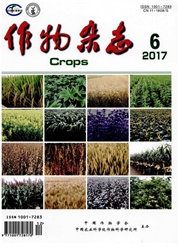

 中文摘要:
中文摘要:
长期以来,大豆遗传转化由于受基因型限制,受体系统不完善、实验结果重复性差等因素,使农杆菌介导的大豆遗传转化频率低下。农杆菌介导法多以子叶节为受体系统,但转化体极易形成嵌合体,导致后期筛选难度加大。基因枪方法的技术难度大、易引起基因沉默。以大豆胚尖为受体,采用农杆菌介导法将玉米蔗糖磷酸合成酶(SPS)基因导入大豆基因组中。由于胚尖具有较强的分生能力,再生细胞由转化细胞而来,极大地降低了生成嵌合体的可能性。卡那霉素抗性植株经PCR及Southem杂交等分子检测,证明目的基因已导入并整合到大豆基因组中。
 英文摘要:
英文摘要:
The low efficiency of soybean genetic transformation was contributed by restricted soybean genotypes as receptors, the faultiness of tissue culture system, etc. Through Agrobacterium-mediated transformation of cotyledonary node, the most of genetic plants were chimeras. Consequently, it was difficult to select genetic transformation plants. Another popularly used method- Particle Bombardment, whose technique was hard to operate, easily resulted in gene silence. In this research, SPS gene was transformed into embryonic tips of soybean via Agrobacterium- mediated method. The embryonic tip was primary meristem which originated from primordial meristem,therefore it had strong dividing capability. Regeneration ceils were derived from genetic cells, which decreased the possibility of being chimeras. The regenerated plants, which were resistant to Kanamycin,were obtained and examined by PCR and Southern blot. The results indicated that the target gene had been transformed into soybean genome.
 同期刊论文项目
同期刊论文项目
 同项目期刊论文
同项目期刊论文
 期刊信息
期刊信息
